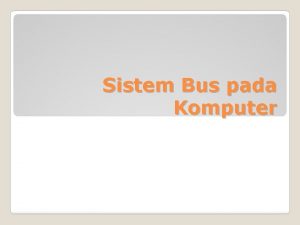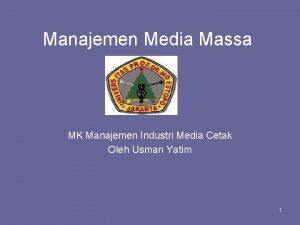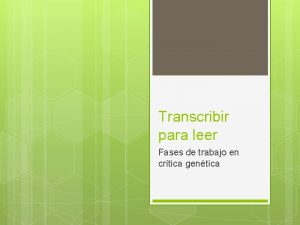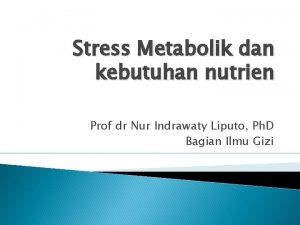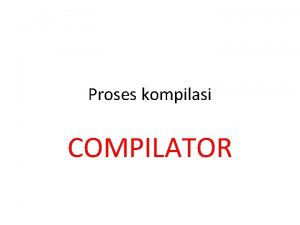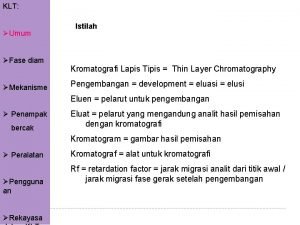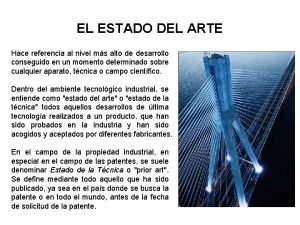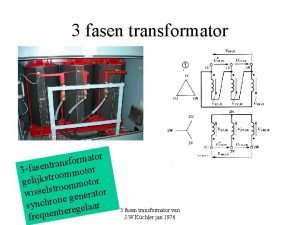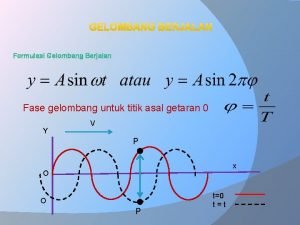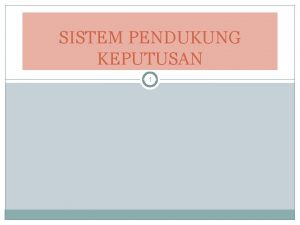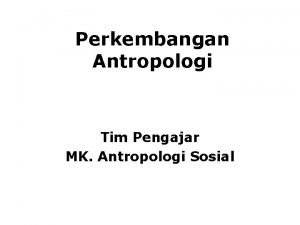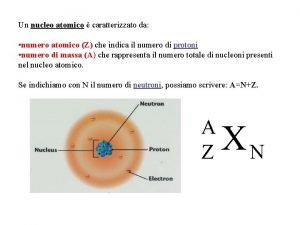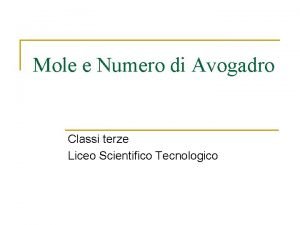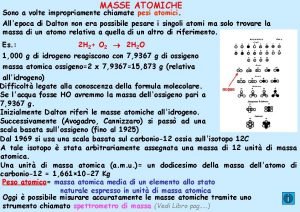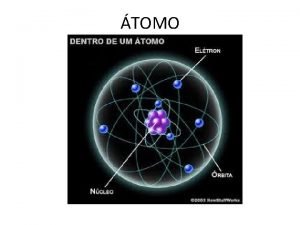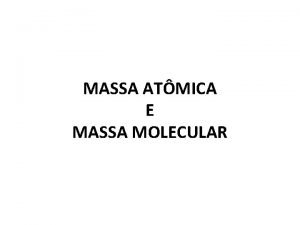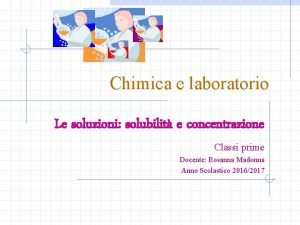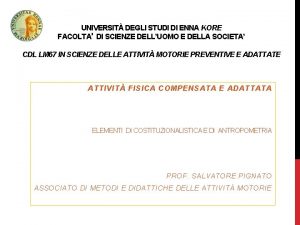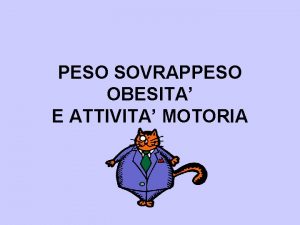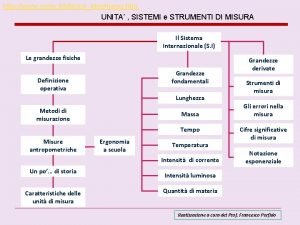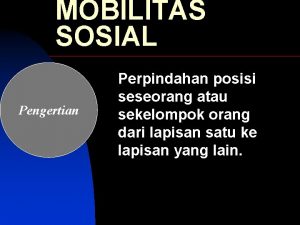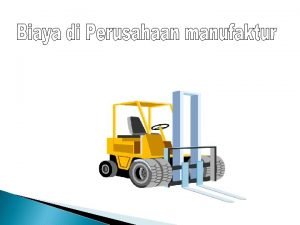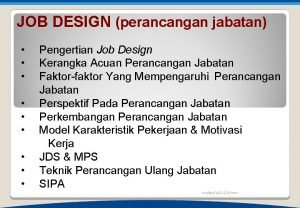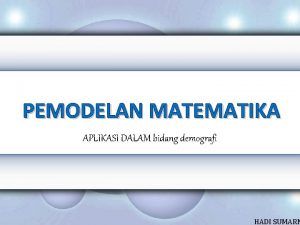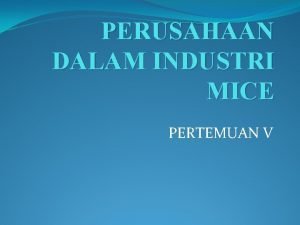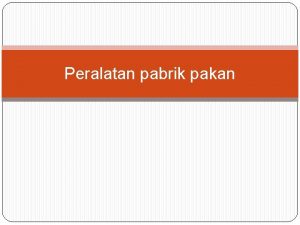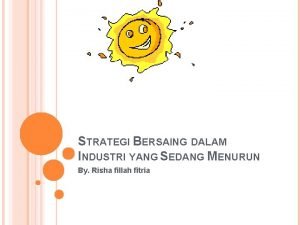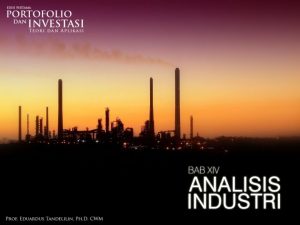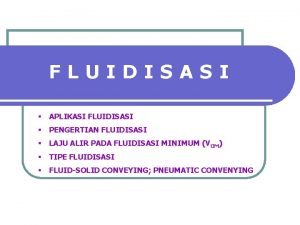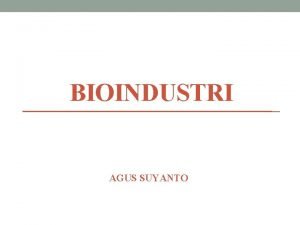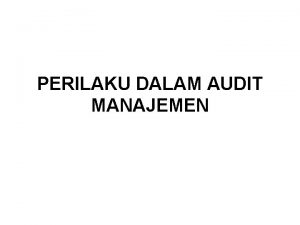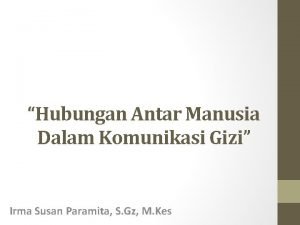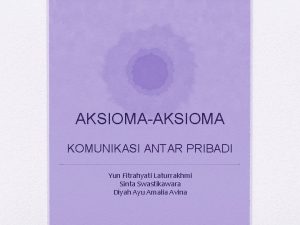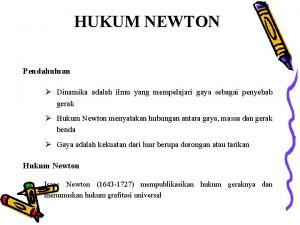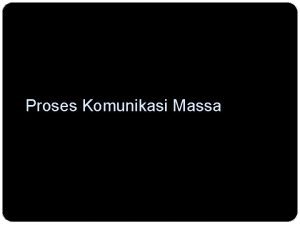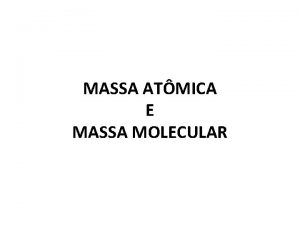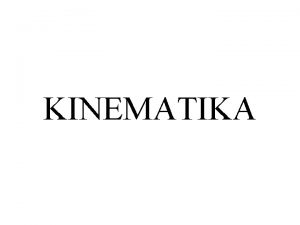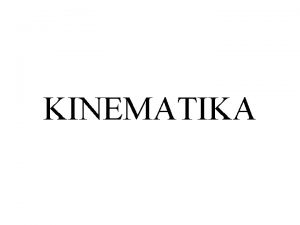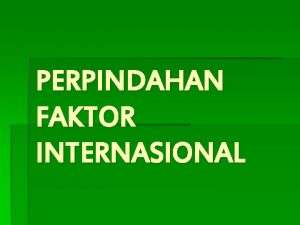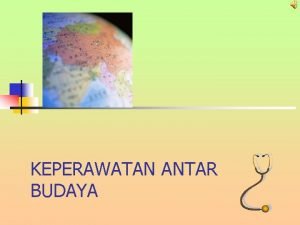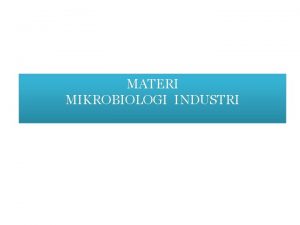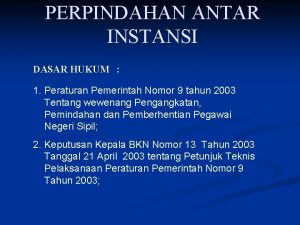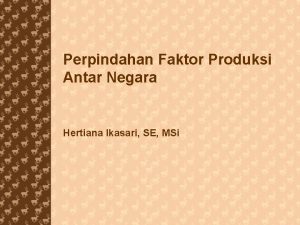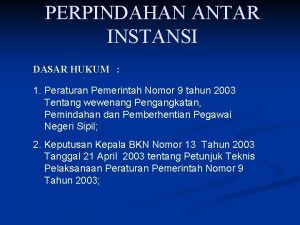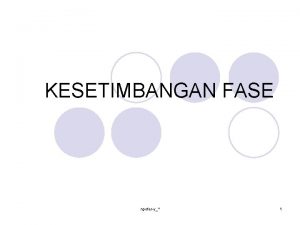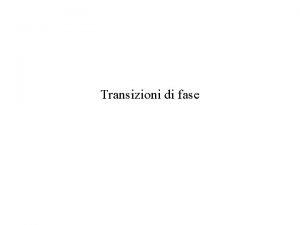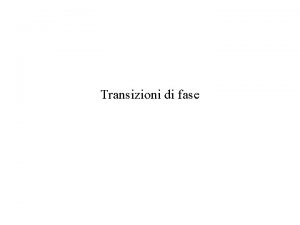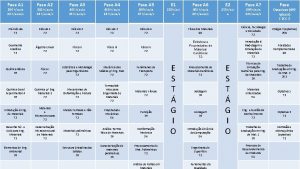Extraction INTRODUCTION Perpindahan massa antar fase dalam industri






































- Slides: 38

Extraction

INTRODUCTION § Perpindahan massa antar fase dalam industri pangan, merupakan sesuatu yang sering terjadi dan menarik untuk dipelajari. § Fase-fase yang ada meliputi gas, cair, padat dan gabungan lebih dari satu fase. § Pada pengetahuan bahan, satu fase terdiri dari beberapa komponen dan setiap komponen mempunyai tendensi yang berbeda terhadap yang lain dalam perpindahan massa. § Suatu komponen mudah larut dalam suatu cairan tertentu, maka kondisi ini merupakan suatu dasar untuk melakukan ekstraksi dengan menggunakan pelarut.

Separation processes general § Mechanical separations e. g. filtration of a solid from a suspension in a liquid, centrifugation, screening etc § Mass transfer operations e. g. distillation, extraction etc Paul Ashall 2007

Mass transfer operations – nature of interface between phases § Gas-liquid contact e. g. absorption, evaporation, distillation etc § Liquid-liquid contact e. g. extraction § Liquid-solid contact e. g. crystallisation, adsorption § Gas-solid contact e. g. adsorption, drying etc Paul Ashall 2007

Mass transfer operations – controlling transport phenomenon § Mass transfer controlling e. g. distillation, absorption, extraction, adsorption etc § Mass transfer and heat transfer controlling e. g. drying, crystallisation § Heat transfer controlling e. g. evaporation Paul Ashall 2007

Methods of operation § Non steady state – concentration changes with time e. g. batch processes § Steady state § Stage § Differential contact Paul Ashall 2007

When both phases are flowing: § Co-current contact Stage 1 etc Stage 2 § Cross flow 1 2 Counter-current flow 1 2 Paul Ashall 2007

EKSTRAKSI PADAT-CAIR § Ekstraksi padatan-cairan adalah suatu contoh operasi pemisahan komponen yang diinginkan (solute) dalam fase padatan dipisahkan dengan mengontakkan padatan dan cairan (solvent) yang mana komponen yang diinginkan dapat larut. § Proses operasinya dapat satu tahapan (stage) atau beberapa (multi) stage

Istilah § Stage dalam keseimbangan : Komponen-2 dari fase-2 yang dikontakkan secara intim bercampur dan dijaga tetap kontak dengan waktu yang cukup dan agar terjadi keseimbangan thermodinamik antara komponen-2 tersebut. § Effisiensi stage : merupakan rasio dari perubahan komposisi yang terjadi dalam stage aktual dengan perubahan komposisi dalam stage teoritis pada kondisi yang sama.

Macam Aliran Dalam ekstraksi padatan-cairan yang keluar ada dua macam yaitu : § aliran cairan bersih (overflow), yaitu larutan solute dalam solvent dan § aliran residu (underflow), yaitu padatan yang tidak dapat larut dan beberapa larutan yang bersamanya. Pada stage aktual konsentrasi solute dalam aliran cairan bersih (overflow) akan lebih kecil dalam larutan yang bersama padatan dalam aliran underflow.

Prinsip Ekstraksi 1. 2. 3. 4. 5. 6. 7. 8. 9. Maserasi Perkolasi Soxhletasi Refluks Destilasi Uap-Air Rotavapor Ekstraksi Cair-Cair Kromatografi Lapis Tipis Penampakan Noda

Jenis Ekstraksi § Ekstraksi Secara Dingin Maserasi, Soxhletasi, Perkolasi § Ekstraksi Secara Panas Refluksi, Destilasi Uap

LIQUID-LIQUID EXTRACTION

INTRODUCTION § Ekstraksi cair-cair adalah pemisahan komponen dari suatu campuran cair dengan mengontakkan pada cairan lain § Sering disebut juga Ekstraksi cair atau ekstraksi pelarut (solvent extraction) § Pemisahan berdasar perbedaan kelarutan Dr. -Ing. Misri Gozan 14

Separatory funnel for use in a liquid –liquid extraction.

Two phase system, hydrophobic (top) and hydrophilic (bottom) for measuring the partition coefficient of compounds.

Extraction equipment Batch: Continuous: single-stage: column: separatory funnel mixer-settler rotating-disk contacter a. agitator; b. stator disk

Mixer-settler column Mixer-settlers operate with a purely stage-wise contact. After every mixer there is a settler. Mixer-settlers can be operated in a multistage, co- or countercurrent fashion.

Agitated column In extraction with high mass transfer and/or changing physical properties, this is the column of choice. The geometry of the agitated compartments can be adapted for changing hydrodynamic conditions. Other main features are the special mixing turbines and the perforated partition plates.


Packed extraction column

Schematic diagram of a Soxhlet extractor.

Faktor-faktor yang mempengaruhi laju ekstraksi meliputi : § § Luasan interface padatan - cairan. Gradien konsentrasi. Temperatur Laju aliran solvent.

V = mass flow rate of the light stream, L = flow rate of the heavy stream, y = concentration of the component being exchanged in the light stream x = concentration of the component being exchanged in the heavy stream n = conditions at equilibrium in the nth stage n + 1 = conditions at equilibrium in the (n + 1)th stage a = the conditions of the streams entering and leaving stage 1, one being raw material and one product from that stage

A simplified equation can be written for such cases:

Example. Single stage steam stripping, of taints from cream A continuous deodorizing system, involving a single stage steam stripping operation, is under consideration for the removal of a taint from cream. If the taint component is present in the cream to the extent of 8 parts per million (ppm) and if steam is to be passed through the contact stage in the proportions of 0. 75 kg steam to every 1 kg cream, calculate the concentration of the taint in the leaving cream. The equilibrium concentration distribution of the taint has been found experimentally to be in the ratio of 1 in the cream to 10 in the steam and it is assumed that equilibrium is reached in each stage. Call the concentration of the taint in the cream x, and in the steam y, both as mass fractions, From the condition that, at equilibrium, the concentration of the taint in the steam is 10 times that in the cream: 10 x = y and in particular, 10 x 1 = y 1 Now, y 1 the concentration of taint in the steam leaving the stage is also the concentration in the output steam y 1 = ya = 10 x 1

The incoming steam concentration = y 2 = 0 as there is no taint in the entering steam. The taint concentration in the entering cream is xa = 8 ppm. These are shown diagrammatically in Fig. 9. 3. Basis is 1 kg of cream The problem is to determine x 1 the concentration of taint in the product cream. The mass ratio of stream flows is 1 of cream to 0. 75 of steam and if no steam is condensed this ratio will be preserved through the stage. 1/0. 75 = 1. 33 is the ratio of cream flow rate to steam flow rate = L/V.

to the one stage n = 1, y 2 = x 1(L/V) + ya – xa(L/V) y 2 = 0 = x 1. 1. 33 + 10. x 1 - 8. 1. 33 x 1 = 10. 64/11. 33 = 0. 94 ppm which is the concentration of the taint in the leaving cream, having been reduced from 8 ppm.

Rate of Extraction Rate of Solution = Driving Force / Resistance where : dw/dt = rate of solution, Kl = mass-transfer coefficient, A = interfacial area, ys and y = the concentrations of the soluble component in the bulk of the liquid and at the interface. It is usually assumed that a saturated solution is formed at the interface and ys is the concentration of a saturated solution at the temperature of the system.

EXAMPLE. Counter current extraction of oil from soya beans with hexane Oil is to be extracted from soya beans in a counter current stage-contact extraction apparatus, using hexane. If the initial oil content of the beans is 18%, the final extract solution is to contain 40% of oil, and if 90% of the total oil is to be extracted, calculate the number of contact stages that are necessary. Assume that the oil is extracted from the beans in the first mixer, that equilibrium is reached in each stage, and that the crushed bean solids in the underflow retain in addition half their weight of solution after each settling stage. The extraction plant is illustrated diagrammatically in Fig. 9. 5.

Overall mass balance In 100 kg raw material there will be 18% oil, that is 82 kg bean solids and 18 kg oil. In the final underflow, 82 kg beans will retain 41 kg of solution, the solution will contain 10% of the initial oil in the beans, that is, 1. 8 kg so that there will be (18 1. 8) = 16. 2 kg of oil in the final overflow, Extract contains (16. 2 x 60/40) = 24. 3 kg of solvent Total volume of final overflow = 16. 2 + 24. 3 = 40. 5 kg Total solvent entering = (39. 2 + 24. 3) = 63. 5 kg MASS BALANCE Basis: 100 kg beans

Oil concentration in underflow = product concentration = 0. 4. It is an equilibrium stage, so oil concentration in underflow equals oil concentration in overflow. Let y 2 represent the concentration of oil in the overflow from stage 2 passing in to stage 1. Then oil entering stage 1 equals oil leaving stage 1. Therefore balance on oil:




Extraction of Nicotine with Immisible Liquids § An inlet water solution of 100 kg/h containing 0. 01 wt fraction nicotine (A) in water is stripped with a kerosene stream of 200 kg/h containing 0. 0005 wt fraction nicotine in a countercurrent stage tower. The water and kerosene are essentially immiscible in each other. It is desired to reduce the concentration of the exit water to 0. 0010 wt fraction nicotine. Determine theoretical number of stages needed. The equilibrium data are as follows (C 5), with x the weight fraction of nicotine in water solution and y in the kerosene.

x y 0. 001010 0. 000806 0. 00746 0. 00682 0. 00246 0. 001959 0. 00988 0. 00904 0. 00500 0. 00454 0. 0202 0. 0185

§Terima kasih
 Contoh kasus perpindahan faktor produksi antar negara
Contoh kasus perpindahan faktor produksi antar negara Lintasan bagi perpindahan data antar modul disebut....
Lintasan bagi perpindahan data antar modul disebut.... Manajemen industri media massa
Manajemen industri media massa Leer y transcribir
Leer y transcribir Hiperkatabolik adalah
Hiperkatabolik adalah Compiling process
Compiling process Fase diam
Fase diam Etapas del estado del arte
Etapas del estado del arte Kenplaat transformator
Kenplaat transformator Fase gelombang
Fase gelombang Fase pengambilan keputusan
Fase pengambilan keputusan Fase fase pengambilan keputusan
Fase fase pengambilan keputusan Antropologi hukum adalah
Antropologi hukum adalah Simbolo numero atomico
Simbolo numero atomico La mole schema
La mole schema Come calcolare il numero di moli
Come calcolare il numero di moli Massa molar
Massa molar Mol
Mol Pusat massa lamina
Pusat massa lamina Solu.zone chimica molecole in movimento
Solu.zone chimica molecole in movimento Scheda misure antropometriche
Scheda misure antropometriche Aumento ponderale
Aumento ponderale Rapporto massa grassa massa magra
Rapporto massa grassa massa magra Perpindahan posisi seseorang atau kelompok
Perpindahan posisi seseorang atau kelompok Siklus pengeluaran perusahaan manufaktur
Siklus pengeluaran perusahaan manufaktur Contoh job enrichment
Contoh job enrichment Contoh pemodelan matematika dalam bidang industri
Contoh pemodelan matematika dalam bidang industri Salah satu unsur yang ada dalam industri pariwisata adalah
Salah satu unsur yang ada dalam industri pariwisata adalah Perusahaan dalam industri mice
Perusahaan dalam industri mice Alur proses produksi pakan ternak
Alur proses produksi pakan ternak Strategi bersaing dalam industri yang sedang menurun
Strategi bersaing dalam industri yang sedang menurun Lima faktor persaingan industri dalam analisis fundamental
Lima faktor persaingan industri dalam analisis fundamental Aplikasi fluidisasi dalam industri
Aplikasi fluidisasi dalam industri Apa tujuan bioteknologi pst dalam bidang industri
Apa tujuan bioteknologi pst dalam bidang industri Bagaimana perilaku auditor dalam hubungan antar manusia
Bagaimana perilaku auditor dalam hubungan antar manusia Hubungan antar manusia dalam komunikasi
Hubungan antar manusia dalam komunikasi Aksioma komunikasi antar pribadi
Aksioma komunikasi antar pribadi Dinamika adalah
Dinamika adalah Hambatan dalam komunikasi massa
Hambatan dalam komunikasi massa

